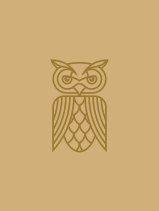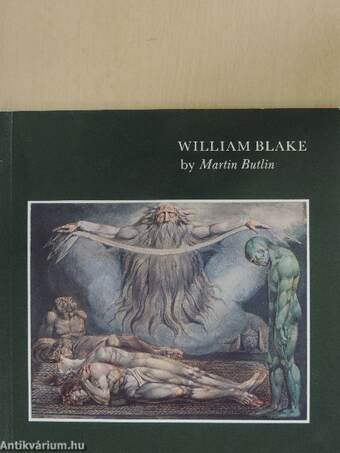1.034.226
kiadvánnyal nyújtjuk Magyarország legnagyobb antikvár könyv-kínálatát

VISSZA
A TETEJÉRE
JAVASLATOKÉszre-
vételek
William Blake
William Blake
| Kiadó: | The Tate Gallery Publications |
|---|---|
| Kiadás helye: | London |
| Kiadás éve: | |
| Kötés típusa: | Varrott papírkötés |
| Oldalszám: | 48 oldal |
| Sorozatcím: | Tate Gallery |
| Kötetszám: | |
| Nyelv: | Angol |
| Méret: | 21 cm x 21 cm |
| ISBN: | 0-905005-49-X |
| Megjegyzés: | Színes reprodukciókkal. |
naponta értesítjük a beérkező friss
kiadványokról
naponta értesítjük a beérkező friss
kiadványokról
Előszó
William Blake 1757-1827 The Blake collection at the Tate Gallery is the most representative selection of his work readily available to the public. It comprises all phases of his career and every... TovábbElőszó
William Blake 1757-1827 The Blake collection at the Tate Gallery is the most representative selection of his work readily available to the public. It comprises all phases of his career and every kind ofsubject. It does not however include any of his illuminated books. More important, it must be remembered that Blake's work in the visual arts was only half his achievement, his poetry being one of the glories of English literature. There is a particularly close relationship between Blake's writings and his designs. Not that the latter are merely illustrations to his writings; rather, both writings and designs were regarded by Blake as the expression of a single Poetic or Prophetic Genius. Only through this Genius could eternal truths be apprehended and this alone was the justification of art. Blake's art was based on a fully thought out philosophy, but during his life this underwent certain changes. In particular the revolutionary ideas ofhis early years, when he was associated with such political radicals as Joseph Johnson, Thomas Paine, Joseph Priestley, Mary Wollstonecraft and William Godwin, were forced underground in the 1790S by the repressive policies of Pitt's government, alarmed by events in Francé. This partly accounts for the obscurity of Blake's later writings and may have encouraged him to express a greater proportion ofhis most deep-felt beliefs in pictorial form. The end of all hopes for political reform and the distortion of the ideals of the French Revolution may alsó have helped to produce the feeling of despairing nihilism that marks Blake's works of the mid-i7gos, a development epitomised in the difference between the Songs of Innocence of 1789 and the Songs of Experience that Blake added to them in 1794. However, from about 1800 he began to reconcile the presence of evil and material existence with a renewed faith in Christianity, though his Christianity was always anything but orthodox. After a few tentative intimations in his early lyrical poems and the satirical An lsland in the Moon, Blake's philosophy found written expression in a series of epic Prophetic Books. In these he evolved what can be called his own mythology. Personages such as Űriben, Los, Enitharmon and Orc struggle in a primaeval world of frozen depths, tormenting fires and globules of blood. They symbolise the successive subdivisions of the originál, innocent man into the individual elements that make up his unified being. The most important are his reason, his imagination, his passions and his senses, which, once divided, war jealously against each other. Blake regarded this process of subdivision is the real Fali of Man, and the orthodox doctrine of Originál Sin and the whole idea of a vengeful Jehovah were repugnant to him. Blake's mythological figures, and the awesome situations in which they find themselves, are most closely paralleled in Blake's illustrations to his own poems, but even his seemingly direct illustrations to the Bible, Shakespeare, Milton and Dante reflect his own philosophical ideas and their expression in his writings. This means that although Blake's best pictures are fully satisfying on their visual merits, one's appreciation can be immensely enriched by a knowledge of Blake's ideas. Blake was born in 1757 and died in 1827. All but three years ofhis life were spent in London. At the age often he entered Henry Pars' drawing school and in 1772 he was apprenticed to James Basire, the engraver. This apprenticeship was important both for the opportunity it gave Blake to see engravings by and after Old Masters, particularly Michelangelo, Raphael and Dürer, and for the time he spent in Westminster Abbey copying tombs for archaeological publications. It alsó established him as a professional engraver. In 1779 he entered the Royal Academy Schools, but he disliked the emphasis placed by his teachers on painterly qualities and drawing from life. The power and originality of Blake's images have led to the idea that he was an untutored originál. This was VisszaTémakörök
- Idegennyelv > Idegennyelvű könyvek > Angol > Művészetek > Festészet
- Idegennyelv > Idegennyelvű könyvek > Angol > Művészetek > Művészettörténet, általános
- Művészetek > Művészettörténet általános > Idegen nyelv > Angol
- Művészetek > Művészettörténet általános > Korszakok, stílusok > XIX. század > Egyéb
- Művészetek > Művészettörténet általános > Kiállítások, aukciók, katalógusok > Külföldi
- Művészetek > Művészettörténet általános > Korszakok, stílusok > XVIII. század > Egyéb
- Művészetek > Festészet > Korszakok, stílusok > XVIII. század > Egyéb
- Művészetek > Festészet > Korszakok, stílusok > XIX. század > Egyéb
- Művészetek > Festészet > Kiállítások, katalógusok > Külföldi
- Művészetek > Festészet > Idegen nyelv > Angol
Martin Butlin
Martin Butlin műveinek az Antikvarium.hu-n kapható vagy előjegyezhető listáját itt tekintheti meg: Martin Butlin könyvek, művekMegvásárolható példányok
Nincs megvásárolható példány
A könyv összes megrendelhető példánya elfogyott. Ha kívánja, előjegyezheti a könyvet, és amint a könyv egy újabb példánya elérhető lesz, értesítjük.






